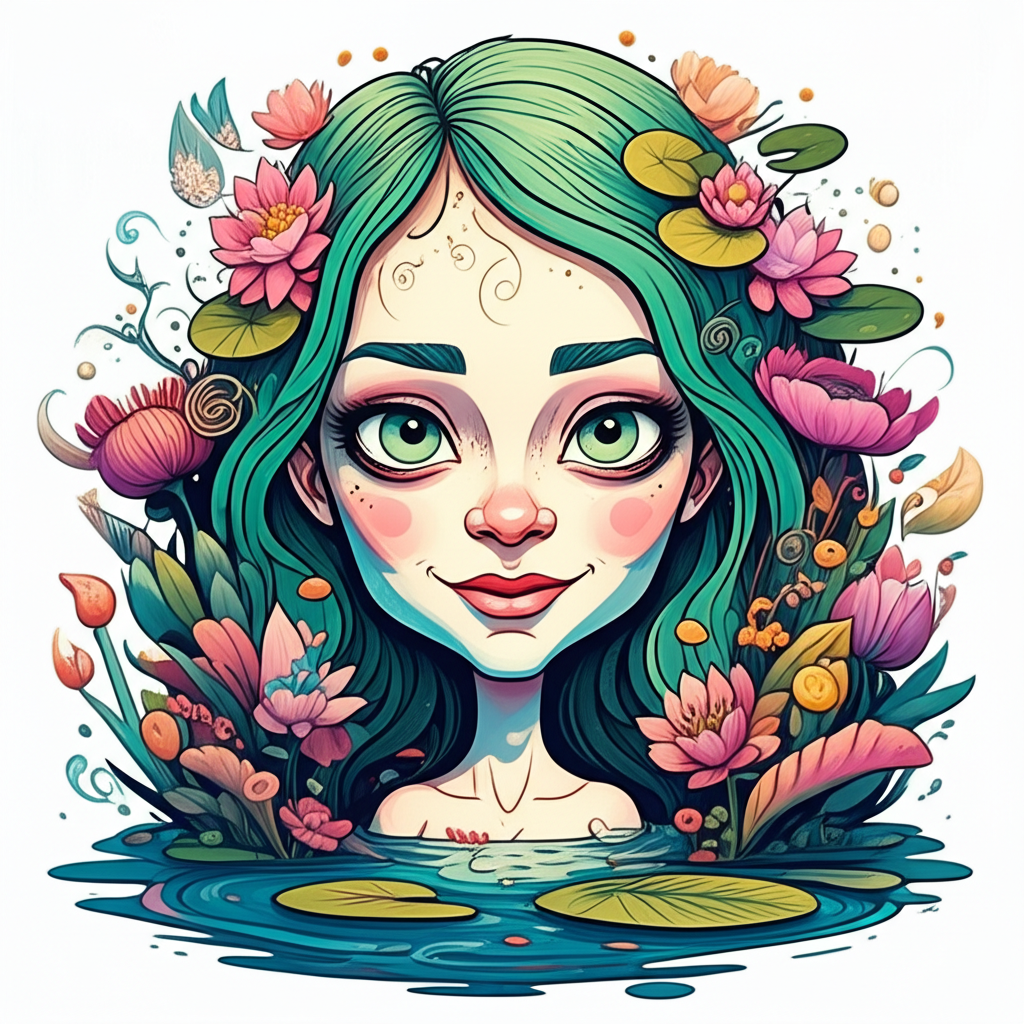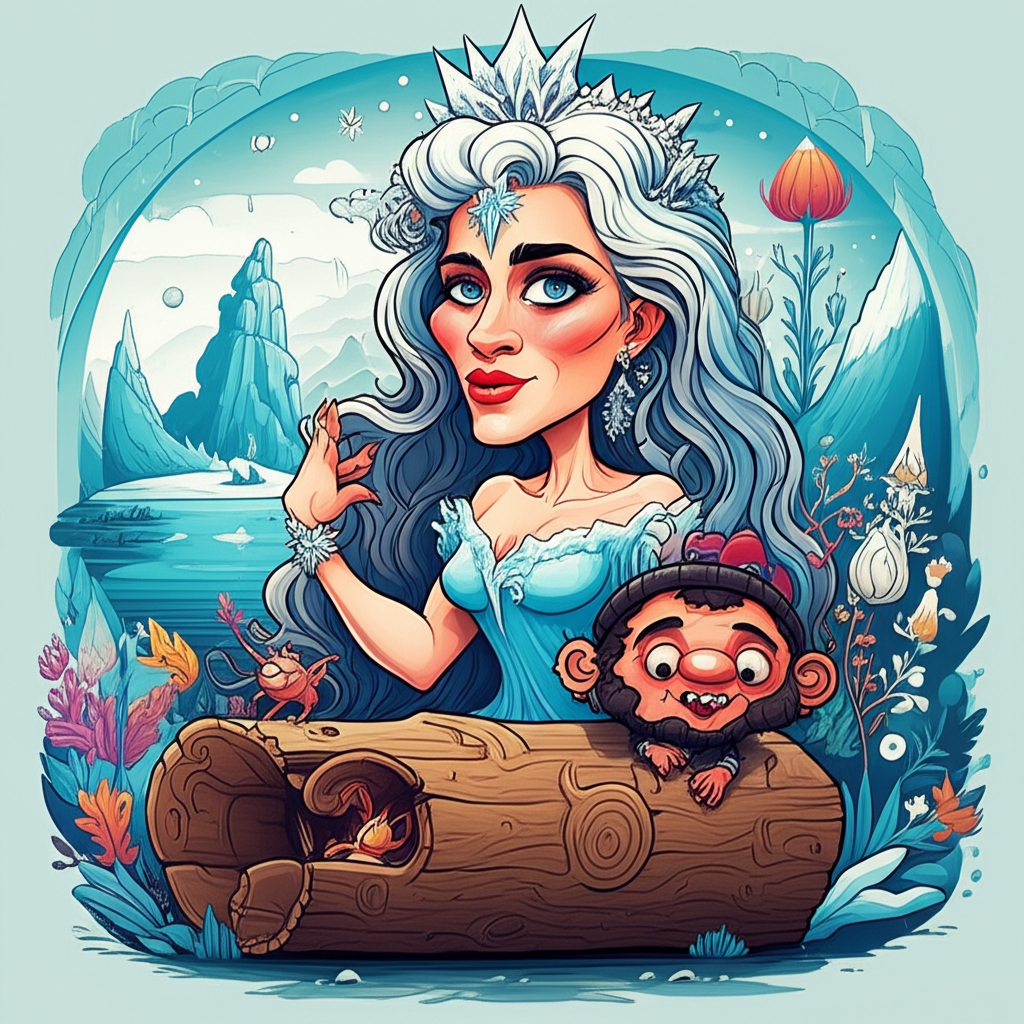
In the hushed twilight of Eastern Europe, where dense forests met winding rivers, ancient narratives took root, woven from the threads of human experience and the mysteries of the natural world. Among these tales, stories of the Rusalka, creatures deeply intertwined with the spirit of water and the vast pantheon of Slavic folklore, echo through the mists of time. These are not accounts of divine decree or historical fact, but rather the imaginative reflections of ancient peoples seeking to understand their world, their fears, and their connection to the powerful forces of nature. The legend of the Rusalka, in particular, offers a fascinating glimpse into the worldview of the people of Kievan Rus’, a vibrant, complex society that flourished between the 9th and 13th centuries.
The era of Kievan Rus’ was a time of profound spiritual and cultural fluidity. While the adoption of Christianity in the late 10th century brought a new religious framework, the old beliefs, deeply rooted in the land and its elements, did not vanish overnight. Instead, they often coexisted, blending and adapting. The people of Kievan Rus’ lived intimately with their environment. Rivers were not merely waterways; they were arteries of life, sources of sustenance, and powerful, often unpredictable forces. The forests teemed with unseen presences, and the rhythm of the seasons dictated daily life. In such a world, it was natural for the imagination to populate these spaces with beings that embodied their perceived energies and dangers. The Rusalka, in this context, emerged as a potent symbol of the dual nature of water – its life-giving abundance and its potential for destructive power.
The Rusalka itself is a figure often depicted as a beautiful, ethereal maiden, her form inextricably linked to the watery realm. Her appearance is frequently described as captivating, with long, flowing hair that can be the color of moonlight or the deepest green of river weeds. Some tales speak of her eyes holding the shimmering allure of the water’s surface, while others mention a translucent quality to her skin, as if she were formed from mist and spray. Her symbolic attributes are manifold. She represents the allure and seductive danger of the untamed feminine spirit, particularly as it manifests in the wild, unpredictable nature of water. Her long hair is often seen as a metaphor for the winding rivers themselves, drawing unsuspecting souls into their depths. The Rusalka embodies both the seductive beauty of nature and its inherent peril, a constant reminder of the respect and caution that must be afforded to the powerful forces that shaped ancient lives.
The narrative of the Rusalka often begins with her tragic origins. Many legends claim that Rusalki were once young women who met untimely, often violent, deaths, particularly by drowning. Perhaps they were jilted lovers, victims of foul play, or even those who took their own lives. Their spirits, tethered to the very waters that claimed them, were unable to find peace. They were condemned to wander the rivers, lakes, and ponds, their existence a perpetual lament and a haunting temptation. The tales often describe these spirits emerging from the water on warm, moonlit nights, their voices carrying a hauntingly beautiful song that lures unsuspecting travelers, particularly young men, towards the riverbanks. Drawn by the enchanting melody and the vision of ethereal beauty, these individuals would approach, only to be embraced by the Rusalka and pulled beneath the surface, never to be seen again. Some stories depict them as playful, even benevolent spirits, braiding the hair of passersby or offering glimpses of hidden treasures. However, the dominant narrative leans towards their more dangerous aspect, a cautionary tale against venturing too close to the water’s edge unprepared or succumbing to temptation.
The symbolism embedded within the Rusalka myth is rich and multifaceted, offering insights into the anxieties and understandings of the people of Kievan Rus’. Primarily, she represents the potent and often ambivalent relationship between humanity and nature. The rivers were essential for agriculture, transportation, and sustenance, yet they could also flood, drown, and claim lives. The Rusalka embodies this duality – the life-giving source and the potential harbinger of death. Her connection to drowning also speaks to the fear of the unknown depths, both literal and metaphorical. She can be interpreted as a personification of the capricious nature of fate, the suddenness with which life can be extinguished. Furthermore, the Rusalka’s allure and the tragic fate of those who fall prey to her can be seen as a moral allegory, a warning against succumbing to vanity, lust, or recklessness. Her mournful existence might also reflect a societal unease with unquiet souls, the fear of restless spirits and the importance of proper rites and respect for the deceased.
In the modern era, the echoes of the Rusalka continue to resonate, finding new life in various forms of creative expression. In literature, she appears as a haunting presence in Slavic-inspired fantasy novels, a symbol of ancient magic and the primal power of nature. Filmmakers have drawn inspiration from her tragic beauty and dangerous allure, weaving her into gothic horror stories or romanticized tales of the supernatural. The world of video games, particularly those with a focus on mythology and folklore, frequently features Rusalki as formidable enemies or enigmatic characters, their watery powers and captivating appearances adding a unique dimension to gameplay. Cultural studies scholars continue to analyze these myths, delving into their origins, their evolution, and their enduring impact on the collective imagination of Eastern European cultures. The Rusalka, once a whispered legend by the riverbanks, has become a recognized figure in the global tapestry of folklore and popular culture.
It is crucial to reiterate that these narratives, including the stories of the Rusalka and the broader folklore of Kievan Rus’, are traditional tales passed down through generations. They are products of human imagination, attempts to explain the world through stories and symbols. As Muslims, we recognize that the only true Creator and Sustainer of all existence is Allah (SWT). These ancient myths do not hold divine power or truth, but rather offer a valuable window into the cultural heritage and storytelling traditions of past societies. They demonstrate the human capacity for imagination, for creating meaning, and for grappling with the profound mysteries of life and the natural world. The enduring power of such stories lies not in their literal interpretation, but in their ability to connect us to our shared human history, our capacity for wonder, and the timeless art of storytelling.





